1. Overview
Dom Pedro II (O Magnânimothe MagnanimousPortuguese), born on December 2, 1825, was the second and last monarch of the Empire of Brazil, reigning for over 58 years. He was the seventh child of Emperor Dom Pedro I of Brazil and Empress Dona Maria Leopoldina. His father's sudden abdication and departure to Europe in 1831 left the five-year-old as emperor, leading to a lonely childhood focused on rigorous study in preparation for rule. His early experiences with court intrigues and political disputes profoundly shaped his character, instilling in him a strong sense of duty and devotion to his country and people, yet also fostering a growing resentment of his monarchical role.
Pedro II inherited an empire on the verge of disintegration but transformed Brazil into an emerging power on the international stage. The nation distinguished itself from its Hispanic neighbors through its political stability, robust freedom of speech, respect for civil rights, vibrant economic growth, and a functional representative parliamentary monarchy. Brazil achieved victories in the Platine War, the Uruguayan War, and the Paraguayan War, and successfully navigated several other international disputes and domestic tensions. Pedro II was a staunch advocate for the abolition of slavery, pushing through reforms despite significant opposition from powerful political and economic interests. He also established a reputation as a vigorous sponsor of learning, culture, and the sciences, earning the respect and admiration of intellectuals such as Charles Darwin, Victor Hugo, and Friedrich Nietzsche, and befriending figures like Richard Wagner, Louis Pasteur, and Henry Wadsworth Longfellow.
Despite his overwhelming popular support and the empire's peak in prestige, Pedro II was overthrown in a sudden coup d'état on November 15, 1889. This coup had little support outside a small clique of military leaders who desired a dictatorial republic. Weary of emperorship and despairing over the monarchy's future, Pedro II did not resist his ouster nor support any attempts to restore the monarchy. He spent the last two years of his life in exile in Europe, living modestly. His reign ended while he was highly regarded by the people, but some of his accomplishments were reversed as Brazil entered a long period of weak governments, dictatorships, and constitutional and economic crises. Decades after his death, his reputation was fully restored, and his remains were returned to Brazil with nationwide celebrations, marking a reconciliation of the Brazilian Republic with its monarchical past. Historians widely regard Pedro II positively, with many ranking him as the greatest Brazilian monarch.
2. Early Life and Education
Pedro II's upbringing and education were meticulously designed to prepare him for the throne, a path he was thrust into at a very young age due to his father's abdication. This period was marked by intense study, political instability, and a profound sense of loneliness that shaped his character.
2.1. Birth and Family
Pedro was born at 02:30 on December 2, 1825, at the Palace of São Cristóvão in Rio de Janeiro, Empire of Brazil. He was named after St. Peter of Alcantara, and his full name was Pedro de Alcântara João Carlos Leopoldo Salvador Bibiano Francisco Xavier de Paula Leocádio Miguel Gabriel Rafael Gonzaga. As the legitimate male child of Emperor Dom Pedro I of Brazil and Empress Dona Maria Leopoldina of Austria to survive infancy, he was a member of the Brazilian branch of the House of Braganza (BragançaPortuguese) and was referred to using the honorific Dom (Lord) from birth. He was the grandson of King Dom João VI of Portugal and nephew of Dom Miguel I of Portugal. Through his mother, Archduchess Maria Leopoldina, who was the daughter of Franz II, the last Holy Roman Emperor and first Emperor of Austria, Pedro was a nephew of Napoleon Bonaparte and a first cousin of Emperors Napoleon II of France, Franz Joseph I of Austria-Hungary, and Maximiliano I of the Second Mexican Empire.
Pedro was officially recognized as heir apparent to the Brazilian throne with the title Prince Imperial on August 6, 1826. Empress Maria Leopoldina died on December 11, 1826, a few days after a stillbirth, when Pedro was only one year old. Two and a half years later, his father married Princess Amélie of Leuchtenberg. Prince Pedro developed a deep and affectionate relationship with his stepmother, whom he came to regard as his mother.
2.2. Regency and Education
Emperor Pedro I's desire to restore his daughter Maria II to her Portuguese throne, which had been usurped by his brother Miguel I, combined with his declining political position in Brazil, led to his abrupt abdication on April 7, 1831. He and Amélie immediately departed for Europe, leaving the five-year-old Prince Imperial as Emperor Dom Pedro II.
Upon leaving the country, Pedro I entrusted his son and remaining daughters to three individuals. The first was José Bonifácio de Andrada, his friend and an influential leader during Brazilian independence, who was named guardian. The second was Mariana de Verna, who had served as his governess (aia) since his birth. As a child, the Prince Imperial affectionately called her "Dadama," as he struggled to pronounce the word dama (Lady) correctly. He regarded her as a surrogate mother and continued to use her nickname into adulthood. The third person was Rafael, an Afro-Brazilian veteran of the Cisplatine War and a trusted employee in the Palace of São Cristóvão, whom Pedro I asked to look after his son-a charge Rafael carried out for the rest of his life.
Bonifácio was dismissed from his position in December 1833 and replaced by another guardian. Pedro II's days were almost entirely devoted to study, with only two hours set aside for amusements. He was intelligent and able to acquire knowledge with great ease, but the hours of study were strenuous, and the preparation for his role as monarch was demanding. He had few friends his age and limited contact with his sisters. This isolated environment, coupled with the sudden loss of his parents, contributed to an unhappy and lonely upbringing. The circumstances of his youth turned him into a shy and somewhat needy person who found refuge and retreat from the real world in books.
2.3. Early Coronation
The period following Pedro I's abdication was one of continuous crises. The regency established to rule on Pedro II's behalf was plagued from the outset by disputes between political factions and widespread rebellions across the nation. By 1835, the possibility of lowering the young Emperor's age of majority, instead of waiting until he turned 18, had been discussed. Politicians who had risen to power during the 1830s had become familiar with the pitfalls of ruling and, by 1840, had "lost all faith in their ability to rule the country on their own." They came to accept Pedro II as an indispensable authority figure for the country's survival.
When asked by politicians if he would like to assume full powers, Pedro II, then 14 years old, accepted. On the following day, July 23, 1840, the General Assembly (the Brazilian Parliament) formally declared Pedro II of age. He was subsequently acclaimed, crowned, and consecrated on July 18, 1841.
3. Consolidation of Power and Early Reign
After the tumultuous regency, Pedro II worked to establish his authority, stabilize the empire, and navigate significant domestic and international challenges, demonstrating a growing maturity and resolve.
3.1. Imperial Authority Established
The end of the factious regency brought much-needed stability to the Brazilian government. Pedro II was widely seen across the nation as a legitimate source of authority, whose position transcended partisanship and petty disputes. However, he was still a young, shy, insecure, and immature boy, a consequence of his broken childhood marked by abandonment, intrigue, and betrayal.
Initially, a group of high-ranking palace servants and notable politicians, led by Aureliano Coutinho (later Viscount of Sepetiba), formed what was known as the "Courtier Faction." They exerted considerable influence over the young Emperor. Some, like Mariana de Verna and Steward Paulo Barbosa da Silva, were very close to him, and Pedro II was skillfully used by the Courtiers against their perceived enemies.
By late 1845 and early 1846, Pedro II embarked on a tour of Brazil's southern provinces, traveling through São Paulo (which then included Paraná), Santa Catarina, and Rio Grande do Sul. He was greatly encouraged by the warm and enthusiastic reception he received. By this time, Pedro II had matured both physically and mentally. He grew into a man who, at 6.2 ft (1.9 m) tall with blue eyes and blond hair, was considered handsome. With his growth, his earlier weaknesses faded, and his strengths of character emerged. He became self-assured and learned to be not only impartial and diligent but also courteous, patient, and personable. He maintained "his emotions under iron discipline," never being rude or losing his temper, and was exceptionally discreet in words and cautious in action. Crucially, this period marked the end of the Courtier Faction's influence. Pedro II began to fully exercise his authority, successfully removing them from his inner circle without causing any public disruption.
3.2. Marriage and Domestic Life
The Brazilian government arranged for Pedro II to marry Princess Teresa Cristina of the Two Sicilies. They were married by proxy in Naples on May 30, 1843. However, upon seeing her in person, the Emperor was noticeably disappointed. Teresa Cristina was short, a bit overweight, and not considered conventionally beautiful. Pedro II did little to hide his disillusionment, with one observer noting he turned his back to her, and another depicting him as so shocked he needed to sit. That evening, he reportedly wept and complained to Mariana de Verna, "They have deceived me, Dadama!" It took several hours to convince him that duty demanded he proceed. The Nuptial Mass, ratifying the proxy vows and conferring the nuptial blessing, took place the following day, September 4.
3.3. Abolition of the Slave Trade and International Relations
Pedro II faced three significant crises between 1848 and 1852. The first involved confronting the illegal slave trade, which had been banned in 1826 through a treaty with the United Kingdom. Despite the ban, trafficking continued unabated. In response, the British government passed the Slave Trade (Brazil) Act 1845, authorizing British warships to board Brazilian vessels and seize any involved in the slave trade. While Brazil dealt with this, the Praieira revolt, a conflict between local political factions in Pernambuco province, erupted on November 6, 1848, and was suppressed by March 1849. The Eusébio de Queirós Law was promulgated on September 4, 1850, granting the Brazilian government broad authority to combat the illegal slave trade. With this new tool, Brazil moved decisively to eliminate slave importation. By 1852, this first crisis was resolved, and Britain acknowledged the suppression of the trade.
The third crisis involved a conflict with the Argentine Confederation over control of territories adjacent to the Río de la Plata and the free navigation of its waterways. Since the 1830s, Argentine dictator Juan Manuel de Rosas had supported rebellions within Uruguay and Brazil. It was not until 1850 that Brazil was able to effectively address the threat posed by Rosas. An alliance was forged between Brazil, Uruguay, and disaffected Argentines, leading to the Platine War and the subsequent overthrow of the Argentine ruler in February 1852. Historian Roderick J. Barman credited a "considerable portion of the credit" for this success to the Emperor, whose "cool head, tenacity of purpose, and sense of what was feasible proved indispensable."
The Empire's successful navigation of these crises significantly enhanced the nation's stability and prestige, establishing Brazil as a hemispheric power. Internationally, European nations began to view Brazil as embodying familiar liberal ideals, such as freedom of the press and constitutional respect for civil liberties. Its functional representative parliamentary monarchy stood in stark contrast to the mix of dictatorships and instability prevalent in other South American nations during this period.
4. Growth and Development of the Empire
This period marked Brazil's ascent as a regional power, characterized by significant economic progress, infrastructural development, and Pedro II's active engagement in politics and his extensive patronage of arts and sciences.
4.1. Pedro II and Politics
By the early 1850s, Brazil enjoyed internal stability and economic prosperity. Under the prime ministry of Honório Hermeto Carneiro Leão (later Marquis of Paraná), the Emperor advanced his ambitious programs: the conciliação (conciliation) and melhoramentos (material developments). Pedro II's reforms aimed to reduce political partisanship and promote infrastructure and economic development. The nation became interconnected through railroad, electrical telegraph, and steamship lines, uniting it into a single entity. The general opinion, both domestically and internationally, was that these achievements were possible due to Brazil's "governance as a monarchy and the character of Pedro II."
Pedro II was neither a British-style figurehead nor an autocrat in the manner of Russian czars. He exercised power through cooperation with elected politicians, economic interests, and popular support. His active presence in the political scene was a crucial part of the government's structure, which also included the cabinet, the Chamber of Deputies, and the Senate (forming the General Assembly). He used his participation in directing the course of government as a means of influence, and his direction became indispensable, though it never devolved into "one-man rule." In handling political parties, he "needed to maintain a reputation for impartiality, work in accord with the popular mood, and avoid any flagrant imposition of his will on the political scene."
The Emperor's most notable political successes were achieved primarily due to his non-confrontational and cooperative approach to issues and partisan figures. He was remarkably tolerant, seldom taking offense at criticism, opposition, or even incompetence. He lacked the constitutional authority to force acceptance of his initiatives without support, and his collaborative approach to governing ensured the nation's progress and the successful functioning of the political system. The Emperor respected the prerogatives of the legislature, even when they resisted, delayed, or thwarted his goals and appointments. Most politicians appreciated and supported his role, having experienced the strife of the regency period when the absence of an impartial emperor led to years of conflict. Their public life experiences convinced them that Pedro II was "indispensable to Brazil's continued peace and prosperity."
4.2. Patronage of Arts and Sciences
"I was born to devote myself to culture and sciences," the Emperor wrote in his private journal in 1862. He had always been eager to learn and found in books a refuge from the demands of his position. Pedro II's interests were wide-ranging, encompassing anthropology, history, geography, geology, medicine, law, religious studies, philosophy, painting, sculpture, theater, music, chemistry, physics, astronomy, poetry, and technology, among others. By the end of his reign, the São Cristóvão palace housed three libraries containing more than 60,000 books. His passion for linguistics led him to study new languages throughout his life; he could speak and write not only Portuguese but also Latin, French, German, English, Italian, Spanish, Greek, Arabic, Hebrew, Sanskrit, Chinese, Occitan, and Tupi. He became the first Brazilian photographer after acquiring a daguerreotype camera in March 1840. He established one laboratory in São Cristóvão for photography and another for chemistry and physics, and he also had an astronomical observatory constructed.
The Emperor considered education to be of national importance and exemplified the value of learning. He once remarked: "Were I not an Emperor, I would like to be a teacher. I do not know of a task more noble than to direct young minds and prepare the men of tomorrow." His reign saw the creation of the Brazilian Historic and Geographic Institute to promote research and preservation in historical, geographical, cultural, and social sciences. The Imperial Academy of Music and National Opera and the Pedro II School were also founded, the latter serving as a model for schools throughout Brazil. The Imperial Academy of the Fine Arts, established by his father, received further strengthening and support. Using his civil list income, Pedro II provided scholarships for Brazilian students to study at universities, art schools, and conservatories of music in Europe. He also financed the creation of the Institut Pasteur, helped underwrite the construction of Wagner's Bayreuth Festspielhaus, and subscribed to similar projects. His efforts were recognized both at home and abroad. Charles Darwin commented: "The Emperor does so much for science, that every scientific man is bound to show him the utmost respect."
Pedro II became a member of the Royal Society, the Russian Academy of Sciences, The Royal Academies for Science and the Arts of Belgium, and the American Geographical Society. In 1875, he was elected to the French Academy of Sciences, an honor previously granted to only two other heads of state: Peter the Great and Napoleon Bonaparte. He exchanged letters with scientists, philosophers, musicians, and other intellectuals, many of whom became his friends, including Richard Wagner, Louis Pasteur, Louis Agassiz, John Greenleaf Whittier, Michel Eugène Chevreul, Alexander Graham Bell, Henry Wadsworth Longfellow, Arthur de Gobineau, Frédéric Mistral, Alessandro Manzoni, Alexandre Herculano, Camilo Castelo Branco, and James Cooley Fletcher. His erudition amazed Friedrich Nietzsche when they met. Victor Hugo told the Emperor: "Sire, you are a great citizen, you are the grandson of Marcus Aurelius," and Alexandre Herculano called him a "Prince whom the general opinion holds as the foremost of his era because of his gifted mind, and due to the constant application of that gift to the sciences and culture."
4.3. Domestic Life and Family
The marriage between Pedro II and Teresa Cristina initially struggled. However, with maturity, patience, and the birth of their first child, Afonso, their relationship improved. Teresa Cristina later gave birth to three more children: Isabel in 1846, Leopoldina in 1847, and Pedro Afonso in 1848. Both sons died at a very young age, which devastated the Emperor and profoundly altered his view of the Empire's future. Despite his affection for his daughters, he did not believe that Princess Isabel, though his heir, would have a viable chance of succeeding him on the throne. He felt that for the monarchy to be sustainable, his successor needed to be male. He increasingly viewed the imperial system as inextricably tied to himself, believing it would not survive him. Isabel and her sister received an exceptional education, but they were not prepared for governing the nation, as Pedro II excluded Isabel from participation in government business and decisions.
Around 1850, Pedro II began having discreet affairs with other women. The most famous and enduring of these relationships involved Luísa Margarida Portugal de Barros, Countess of Barral, with whom he formed a romantic and intimate, though not adulterous, friendship after she was appointed governess to the emperor's daughters in November 1856. Throughout his life, the Emperor harbored a hope of finding a soulmate, something he felt deprived of due to the necessity of a marriage of state to a woman for whom he never felt passion. This illustrates his dual identity: one who assiduously carried out his duty as emperor, and another who considered the imperial office an unrewarding burden, finding greater happiness in the worlds of literature and science.
Pedro II was a hard-working monarch with a demanding routine. He typically woke at 7:00 and did not sleep before 02:00. His entire day was devoted to affairs of state, with his limited free time spent reading and studying. The Emperor maintained his daily routine dressed in a simple black tailcoat, trousers, and cravat. For special occasions, he would wear court dress, and he only appeared in full regalia with crown, mantle, and scepter twice a year, at the opening and closing of the General Assembly. Pedro II held politicians and government officials to the strict standards he exemplified. He adopted a rigorous policy for the selection of civil servants based on morality and merit. To set the standard, he lived simply, once stating: "I also understand that useless expenditure is the same as stealing from the Nation." Balls and assemblies of the Court ceased after 1852. He also refused to request or allow his civil list amount of 800.00 K BRL per year (equivalent to 405.00 K USD or 90.00 K GBP in 1840) to be raised from the declaration of his majority until his dethronement almost fifty years later.
5. The Paraguayan War
The Paraguayan War was a major 19th-century conflict in South America that deeply impacted Brazil. Pedro II's personal involvement and leadership were crucial in securing victory, though at a heavy cost to the empire.
5.1. Background and Brazilian Intervention
As war with the British Empire threatened, Brazil had to turn its attention to its southern frontiers. Another civil war had begun in Uruguay as its political parties turned against each other. This internal conflict led to the murder of Brazilians and the looting of their property in Uruguay. Brazil's government decided to intervene, fearing any impression of weakness in the face of potential conflict with the British. A Brazilian army invaded Uruguay in December 1864, initiating the brief Uruguayan War, which concluded in February 1865.
Meanwhile, the dictator of Paraguay, Francisco Solano López, exploited the situation to establish his country as a regional power. The Paraguayan Army invaded the Brazilian province of Mato Grosso (the area known after 1977 as the state of Mato Grosso do Sul), triggering the Paraguayan War. Four months later, Paraguayan troops invaded Argentine territory as a prelude to an attack on Rio Grande do Sul.
5.2. Pedro II's Role and Leadership
Aware of the anarchy in Rio Grande do Sul and the incapacity and incompetence of its military chiefs to resist the Paraguayan army, Pedro II decided to go to the front in person. Upon receiving objections from the cabinet, the General Assembly, and the Council of State, Pedro II famously declared: "If they can prevent me from going as an Emperor, they cannot prevent me from abdicating and going as a Fatherland Volunteer"-an allusion to those Brazilians who volunteered for war and became known as the "Fatherland Volunteers." The monarch himself was popularly called the "number-one volunteer."
Given permission to leave, Pedro II disembarked in Rio Grande do Sul in July and proceeded overland from there. He traveled by horse and wagon, sleeping in a campaign tent. In September, Pedro II arrived in Uruguaiana, a Brazilian town occupied by a besieged Paraguayan army. The Emperor rode within rifle-shot of Uruguaiana, but the Paraguayans did not attack him. To avoid further bloodshed, he offered terms of surrender to the Paraguayan commander, who accepted. Pedro II's coordination of the military operations and his personal example played a decisive role in successfully repulsing the Paraguayan invasion of Brazilian territory. Before returning to Rio de Janeiro, he received the British diplomatic envoy Edward Thornton, who apologized on behalf of Queen Victoria and the British Government for the recent crisis between the empires. The Emperor considered this diplomatic victory over the world's most powerful nation sufficient and renewed friendly relations.
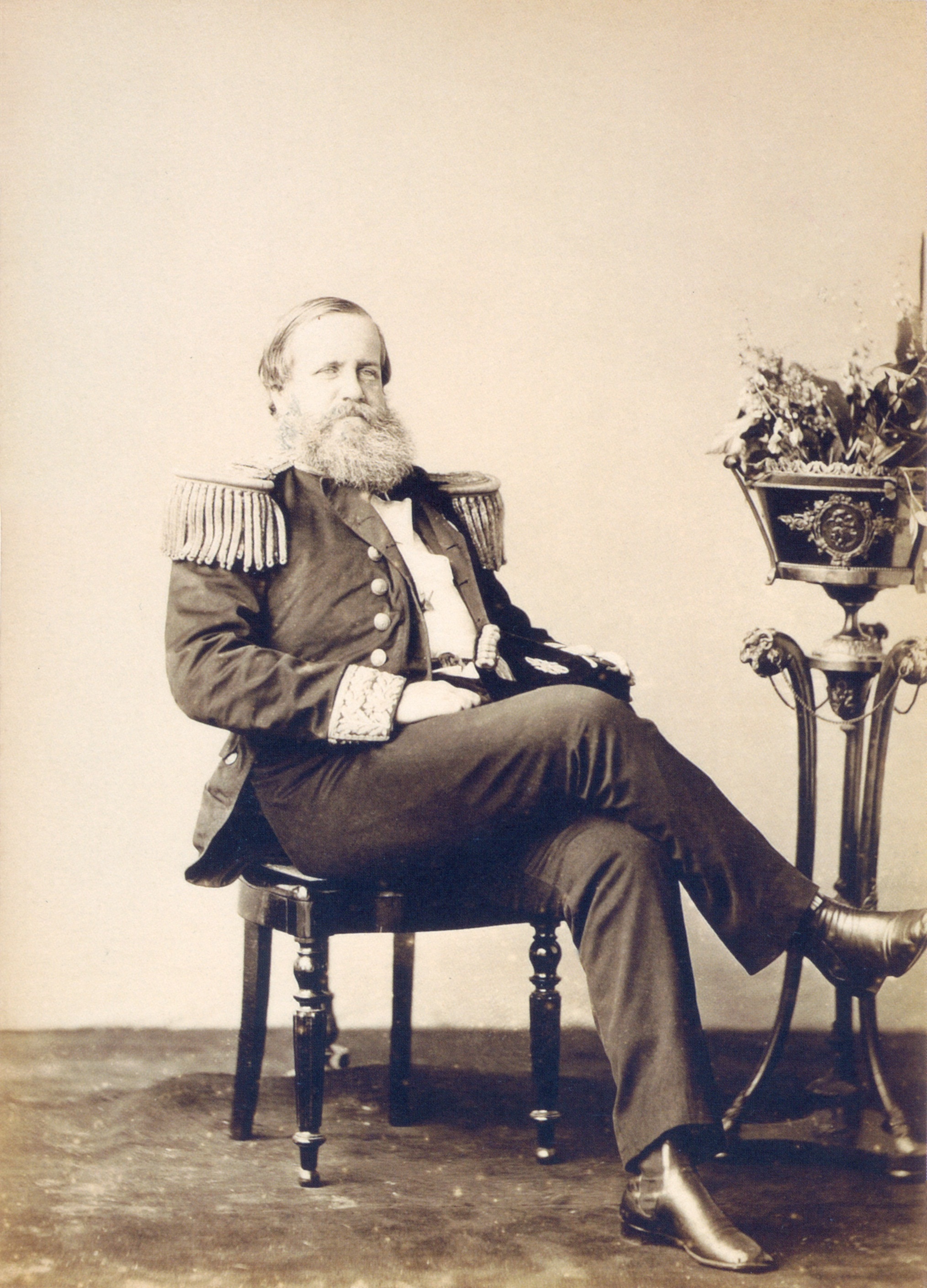
Against all expectations, the war continued for five years. During this period, Pedro II's time and energy were entirely devoted to the war effort. He tirelessly worked to raise and equip troops to reinforce the front lines and to push forward the fitting of new warships for the navy. The atrocities committed during Paraguay's invasion of Brazilian territory-including the rape of women, widespread violence against civilians, ransacking, and destruction of properties-made a deep impression on him. He warned the Countess of Barral in November 1866 that "the war should be concluded as honor demands, cost what it cost." Historian Roderick Barman noted that "Difficulties, setbacks, and war-weariness had no effect on his quiet resolve." Mounting casualties did not distract him from advancing what he saw as Brazil's righteous cause, and he stood prepared to personally sacrifice his own throne to achieve an honorable outcome. Writing in his journal a few years prior, Pedro II had remarked: "What sort of fear could I have? That they take the government from me? Many better kings than I have lost it, and to me it is no more than the weight of a cross which it is my duty to carry."
At the same time, Pedro II worked to prevent quarrels between the national political parties from impairing the military response. The Emperor prevailed over a serious political crisis in July 1868 resulting from a quarrel between the cabinet and Luís Alves de Lima e Silva (then-Marques and later Duke of Caxias), the commander-in-chief of the Brazilian forces in Paraguay. Caxias was also a politician and a member of the opposing party to the ministry. The Emperor sided with him, leading to the cabinet's resignation. As Pedro II maneuvered to bring about a victorious outcome in the conflict with Paraguay, he threw his support behind the political parties and factions that seemed most useful in the effort. This approach, while effective for the war, harmed the monarchy's reputation and severely impacted its trusted position as an impartial mediator in the long term. He was unconcerned for his personal position, and regardless of the impact upon the imperial system, he determined to put the national interest ahead of any potential harm caused by such expediencies.
5.3. Consequences and Costs
Pedro II's refusal to accept anything short of total victory was pivotal in the outcome of the war. His tenacity was rewarded with the news that López had died in battle on March 1, 1870, bringing the war to a close. The war, which lasted five years, came at a heavy cost. Brazil suffered immense human and financial tolls. Despite the victory, Pedro II turned down the General Assembly's suggestion to erect an equestrian statue of him to commemorate the triumph, choosing instead to use the money to build elementary schools.
6. Apogee of the Empire
The period following the Paraguayan War marked the zenith of the Brazilian Empire's prosperity and international standing. This era was characterized by significant social reforms, particularly towards the abolition of slavery, and the Emperor's extensive travels abroad, which further enhanced Brazil's prestige.
6.1. Abolitionism and Social Reforms
In the 1870s, Brazil experienced significant progress in both social and political spheres, as segments of society benefited from reforms and shared in increasing prosperity. Brazil's international reputation for political stability and investment potential greatly improved. The Empire was seen as a modern and progressive nation, unequaled in the Americas with the exception of the United States. The economy grew rapidly, and immigration flourished. Railroad, shipping, and other modernization projects were adopted. With "slavery destined for extinction and other reforms projected, the prospects for 'moral and material advances' seemed vast."
In 1870, few Brazilians openly opposed slavery, and even fewer publicly condemned it. Pedro II, who did not own slaves himself, was one of the few who did oppose it. The abolition of slavery was a delicate subject, as slaves were utilized by all social classes, from the wealthiest to the poorest. Pedro II sought to end the practice gradually to soften the economic impact on the nation. Lacking direct constitutional authority to abolish slavery, the Emperor needed to employ all his skills to convince, influence, and gather support among politicians to achieve his goal. His first open move occurred in 1850 when he threatened to abdicate unless the General Assembly declared the Atlantic slave trade illegal.
Having dealt with the overseas supply of new slaves, Pedro II turned his attention in the early 1860s to eliminating the remaining source: the enslavement of children born to slaves. Legislation was drafted at his initiative, but the conflict with Paraguay delayed discussion of the proposal in the General Assembly. Pedro II openly called for the gradual eradication of slavery in his speech from the throne in 1867. He faced heavy criticism, and his move was condemned as "national suicide." Critics argued "that abolition was his personal desire and not that of the nation." He consciously ignored the growing political damage to his image and to the monarchy as a consequence of his support for abolition. Eventually, a bill championed by Prime Minister José Paranhos, was enacted as the Law of Free Birth on September 28, 1871, which declared all children born to slave women after that date to be free.
6.2. Overseas Tours
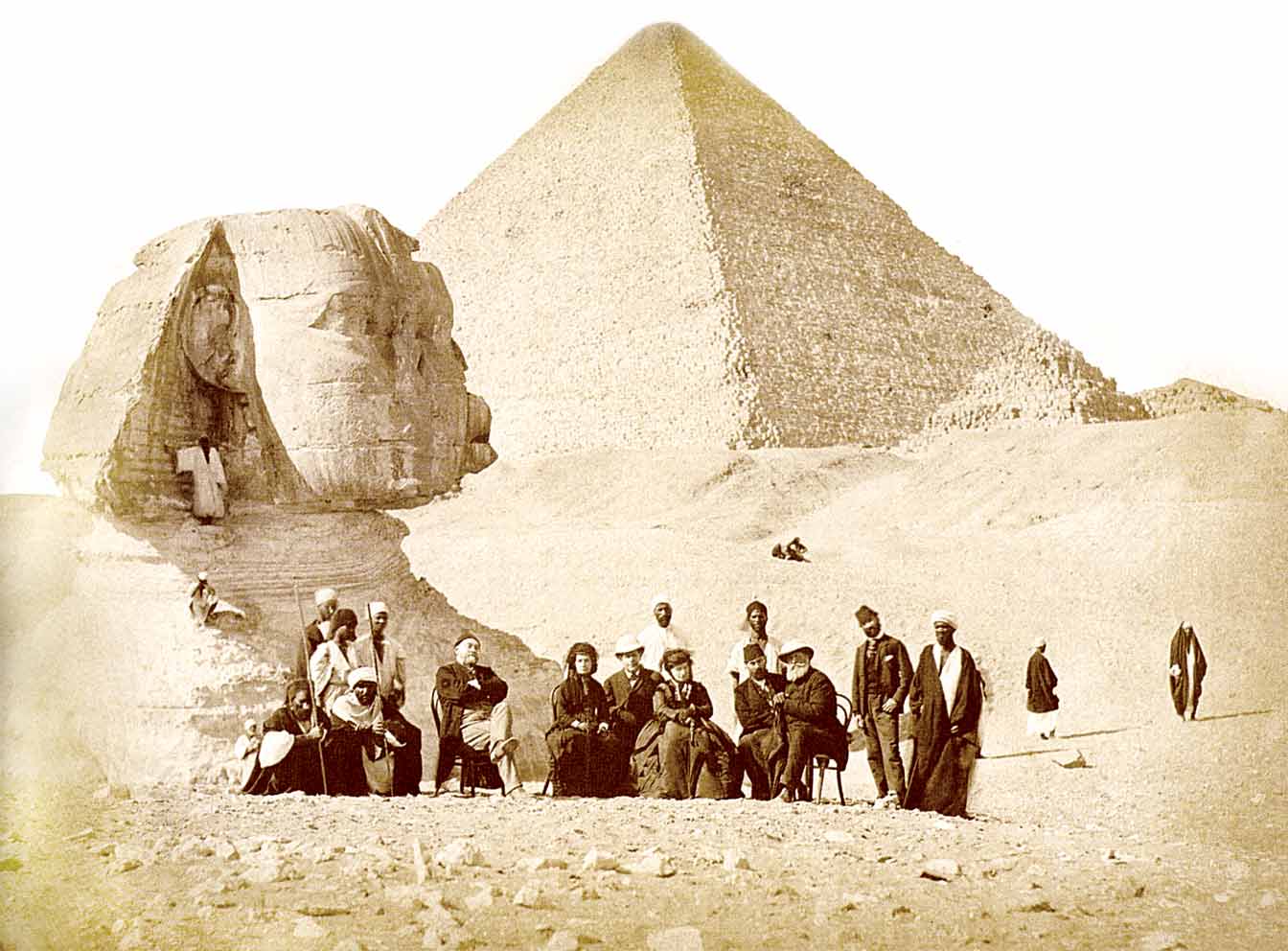
On May 25, 1871, Pedro II and his wife traveled to Europe. He had long desired a vacation abroad. When news arrived that his younger daughter, the 23-year-old Leopoldina, had died in Vienna of typhoid fever on February 7, he finally had a pressing reason to venture outside the Empire. Upon arriving in Lisbon, Portugal, he immediately went to the Janelas Verdes palace (now the National Museum of Ancient Art), where he met with his stepmother, Amélie of Leuchtenberg. The two had not seen each other in forty years, and the meeting was emotional. Pedro II remarked in his journal: "I cried from happiness and also from sorrow seeing my Mother so affectionate toward me but so aged and so sick."
The Emperor proceeded to visit Spain, Great Britain, Belgium, Germany, Austria, Italy, Egypt, Greece, Switzerland, and France. In Coburg, he visited his daughter's tomb. He found this to be "a time of release and freedom." He traveled under the assumed name "Dom Pedro de Alcântara," insisting upon being treated informally and staying only in hotels. Only while touring abroad could the Emperor shake off the formal existence and demands of the life he knew in Brazil. He spent his days sightseeing and conversing with scientists and other intellectuals with whom he shared interests. The European sojourn proved to be a success, and his demeanor and curiosity earned respectful notices in the nations he visited. The prestige of both Brazil and Pedro II were further enhanced during the tour when news arrived from Brazil that the Law of Free Birth, abolishing the last source of enslavement, had been ratified. The imperial party returned to Brazil in triumph on March 31, 1872.
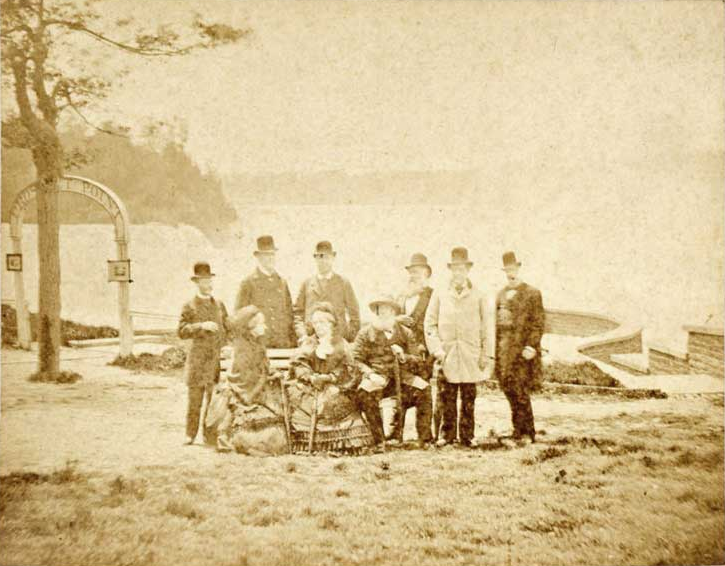
Once again, the Emperor traveled abroad, this time to the United States. He was accompanied by his faithful servant Rafael, who had raised him from childhood. Pedro II arrived in New York City on April 15, 1876, and from there traveled throughout the country, reaching as far as San Francisco in the west, New Orleans in the south, Washington, D.C., and north to Toronto, Canada. The trip was "an unalloyed triumph," with Pedro II making a deep impression on the American people through his simplicity and kindness. He then crossed the Atlantic, visiting Denmark, Sweden, Finland, Russia, the Ottoman Empire, Greece, the Holy Land, Egypt, Italy, Austria, Germany, France, Britain, Ireland, the Netherlands, Switzerland, and Portugal. He returned to Brazil on September 22, 1877.
Pedro II's trips abroad had a profound psychological impact. While traveling, he was largely freed from the restrictions imposed by his office. Under the pseudonym "Pedro de Alcântara," he enjoyed moving about as an ordinary person, even taking a train journey solely with his wife. Only while touring abroad could the Emperor escape the formal existence and demands of his life in Brazil. It became increasingly difficult for him to reacclimate to his routine as head of state upon returning. Following the early deaths of his sons, the Emperor's faith in the monarchy's future had evaporated. His trips abroad now made him resentful of the emperorship assigned to him at the age of five. If he previously had no interest in securing the throne for the next generation, he now had no desire to maintain it during his own lifetime.
6.3. The Religious Issue
Soon after returning to Brazil, Pedro II faced an unexpected crisis. The Brazilian clergy had long been understaffed, undisciplined, and poorly educated, leading to a significant loss of respect for the Catholic Church. The imperial government had embarked upon a reform program to address these deficiencies. As Catholicism was the state religion, the government exercised considerable control over Church affairs, paying clerical salaries, appointing parish priests, nominating bishops, ratifying papal bulls, and overseeing seminaries. In pursuing reform, the government selected bishops who met its criteria for education, support for reform, and moral fitness. However, as more capable men began to fill the clerical ranks, resentment of government control over the Church increased.
The bishops of Olinda and Belém (in the provinces of Pernambuco and Pará, respectively) were two of the new generation of educated and zealous Brazilian clerics. They had been influenced by ultramontanism, which was spreading among Catholics during this period. In 1872, they ordered Freemasons expelled from lay brotherhoods. While European Freemasonry often tended towards atheism and anti-clericalism, things were very different in Brazil, where membership in Masonic orders was common-although Pedro II himself was not a Freemason. The government, headed by the Viscount of Rio Branco, attempted on two separate occasions to persuade the bishops to repeal their orders, but they refused. This led to their trial and conviction by the Superior Court of Justice. In 1874, they were sentenced to four years at hard labor, though the Emperor commuted this to imprisonment only.
Pedro II played a decisive role by unequivocally backing the government's actions. He was a conscientious adherent of Catholicism, which he viewed as advancing important civilizing and civic values. While he avoided anything that could be considered unorthodox, he felt free to think and behave independently. The Emperor accepted new ideas, such as Charles Darwin's theory of evolution, of which he remarked that "the laws that he [Darwin] has discovered glorify the Creator." He was moderate in his religious beliefs but could not accept disrespect for civil law and government authority. As he told his son-in-law: "[The government] has to ensure that the constitution is obeyed. In these proceedings there is no desire to protect masonry; but rather the goal of upholding the rights of the civilian power." The crisis was resolved in September 1875 after the Emperor grudgingly agreed to grant full amnesty to the bishops and the Holy See annulled the interdicts.
7. Decline and Fall of the Monarchy
The final years of Pedro II's reign saw a gradual weakening of the monarchy, influenced by the Emperor's personal weariness, shifting political alliances, and ultimately, the decisive impact of the final abolition of slavery, which paved the way for a republican coup.
7.1. Weariness and Political Alienation
During the 1880s, Brazil continued to prosper, and social diversity increased markedly, including the first organized push for women's rights. However, letters written by Pedro II reveal a man grown world-weary with age and having an increasingly alienated and pessimistic outlook. He remained respectful of his duty and was meticulous in performing the tasks demanded of the imperial office, albeit often without enthusiasm. Because of his increasing "indifference towards the fate of the regime" and his lack of action in support of the imperial system once it was challenged, historians have attributed the "prime, perhaps sole, responsibility" for the dissolution of the monarchy to the Emperor himself.
The political figures who had arisen during the 1830s, having experienced the perils and obstacles of government, saw the Emperor as providing a fundamental source of authority essential for governing and for national survival. These elder statesmen began to die off or retire from government until, by the 1880s, they had almost entirely been replaced by a newer generation of politicians who had no experience of the early years of Pedro II's reign. They had only known a stable administration and prosperity and saw no reason to uphold and defend the imperial office as a unifying force beneficial to the nation. To them, Pedro II was merely an old and increasingly sick man who had steadily eroded his position by taking an active role in politics for decades. Before, he had been above criticism, but now his every action and inaction prompted meticulous scrutiny and open criticism. Many young politicians had become apathetic toward the monarchic regime and, when the time came, they would do nothing to defend it. Pedro II's achievements went unremembered and unconsidered by the ruling elites. By his very success, the Emperor had made his position seem unnecessary.
The lack of an heir who could feasibly provide a new direction for the nation also diminished the long-term prospects of the Brazilian monarchy. The Emperor loved his daughter Isabel, but he considered the idea of a female successor as antithetical to the role required of Brazil's ruler. He viewed the death of his two sons as being a sign that the Empire was destined to be supplanted. Resistance to accepting a female ruler was also shared by the political establishment. Even though the Constitution allowed female succession to the throne, Brazil was still very traditional, and only a male successor was thought capable as head of state.
7.2. Abolition of Slavery and the Republican Coup
By June 1887, the Emperor's health had considerably worsened, and his personal doctors suggested going to Europe for medical treatment. While in Milan, he spent two weeks between life and death, even receiving the anointing of the sick. While recovering, on May 22, 1888, he received news that slavery had been abolished in Brazil. With a weak voice and tears in his eyes, he exclaimed, "Great people! Great people!" Pedro II returned to Brazil and disembarked in Rio de Janeiro in August 1888. The "whole country welcomed him with an enthusiasm never seen before. From the capital, from the provinces, from everywhere, arrived proofs of affection and veneration." With the devotion expressed by Brazilians upon the return of the Emperor and the Empress from Europe, the monarchy seemed to enjoy unshakable support and to be at the height of its popularity.
The nation enjoyed great international prestige during the final years of the Empire, having become an emerging power within the international arena. Predictions of economic and labor disruption caused by the abolition of slavery failed to materialize, and the 1888 coffee harvest was successful. However, the end of slavery resulted in an explicit shift of support to republicanism by rich and powerful coffee farmers who held great political, economic, and social power in the country. Republicanism was an elitist creed that never flourished in Brazil, with little support in the provinces. The combination of republican ideas and the dissemination of positivism among the army's lower and medium officer ranks led to indiscipline among the corps and became a serious threat to the monarchy. These officers dreamed of a dictatorial republic, which they believed would be superior to the monarchy.
Although there was no widespread desire among the majority of the Brazilian population to change the form of government, civilian republicans began pressuring army officers to overthrow the monarchy. They launched a coup d'état, arrested Prime Minister Afonso Celso, Viscount of Ouro Preto, and instituted the republic on November 15, 1889. The few people who witnessed what occurred did not realize that it was a rebellion. Historian Lídia Besouchet noted that "[r]arely has a revolution been so minor." During the ordeal, Pedro II showed no emotion, as if unconcerned about the outcome. He dismissed all suggestions for quelling the rebellion that politicians and military leaders put forward. When he heard the news of his deposition, he simply commented: "If it is so, it will be my retirement. I have worked too hard and I am tired. I will go rest then." He and his family were sent into exile in Europe on November 17.
8. Exile and Death
Following his deposition and exile, Pedro II spent his final years in Europe, a period marked by loneliness and declining health, culminating in his death in Paris.
8.1. Life in Exile
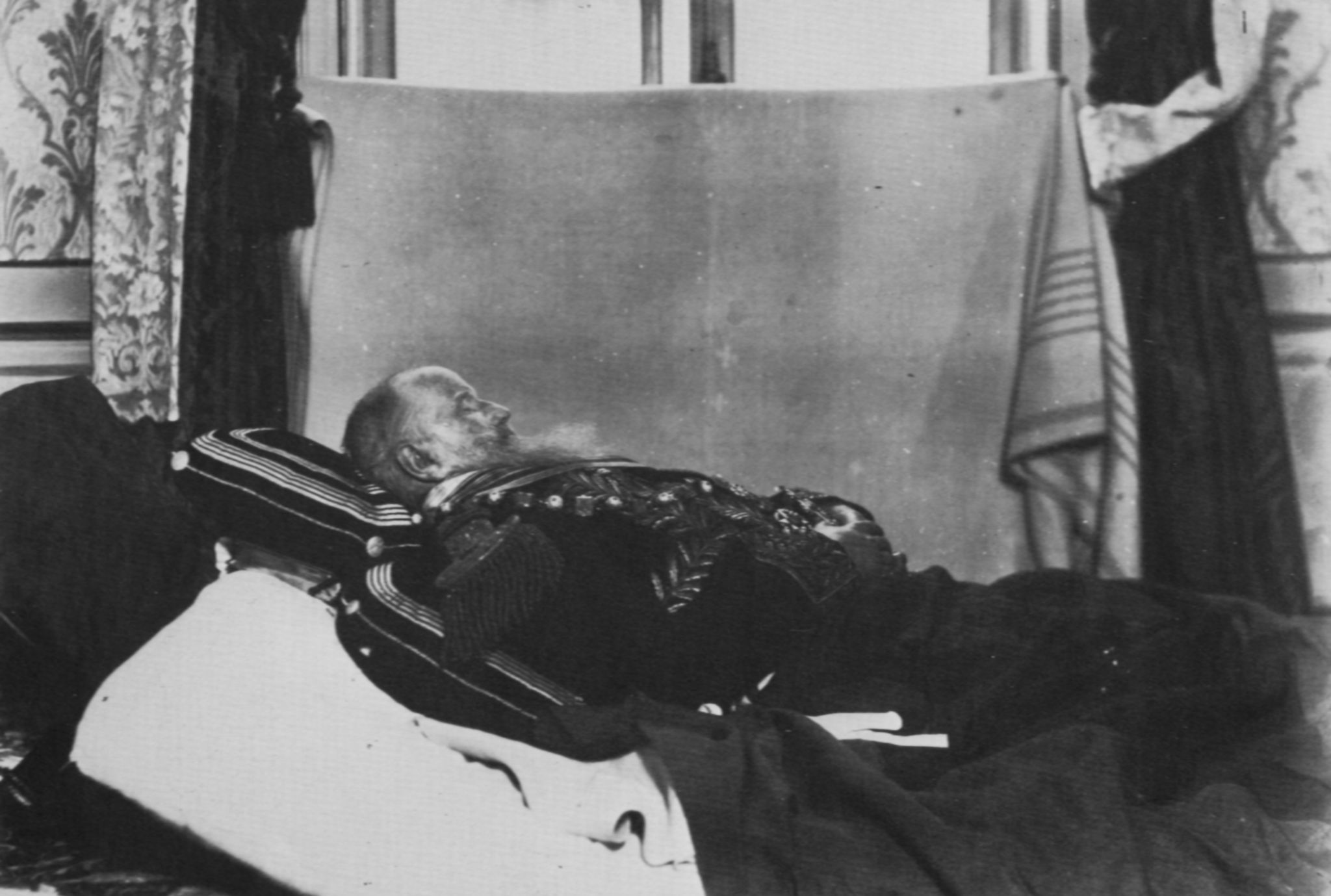
Empress Teresa Cristina died three weeks after their arrival in Europe, on December 28, 1889. Following her death, Princess Isabel and her family moved to another location, while Pedro II settled first in Cannes and later in Paris. Pedro's last couple of years were lonely and melancholic. He lived in modest hotels, often facing financial difficulties, and frequently wrote in his journal of dreams in which he was allowed to return to Brazil. Despite his longing, he never supported a restoration of the monarchy, once stating that he had no desire "to return to the position which I occupied, especially not by means of conspiracy of any sort."
8.2. Death and Funeral
One day, Pedro II contracted an infection that quickly progressed into pneumonia. He rapidly declined and died at 00:35 on December 5, 1891, surrounded by his family. His last recorded words were: "May God grant me these last wishes-peace and prosperity for Brazil." While his body was being prepared, a sealed package was found in the room, accompanied by a message written by the Emperor himself: "It is soil from my country, I wish it to be placed in my coffin in case I die away from my fatherland."
Princess Isabel initially wished to hold a discreet and private burial ceremony, but she eventually agreed to the French government's request for a state funeral. On December 9, thousands of mourners attended the ceremony at La Madeleine. Aside from Pedro's family, attendees included: Francesco II, the former King of the Two Sicilies; Isabel II, the former Queen of Spain; Philippe, comte de Paris; and other members of European royalty. Also present were General Joseph Brugère, representing President Sadi Carnot; the presidents of the Senate and the Chamber of Deputies, along with their members; diplomats; and other representatives of the French government. Nearly all members of the Institut de France were in attendance. Other governments from the Americas and Europe sent representatives, as did the Ottoman Empire, Persia, China, and the Empire of Japan.
Following the services, the coffin was taken in procession to the railway station to begin its journey to Portugal. Approximately 300,000 people lined the route under incessant rain and cold. The journey continued to the Church of São Vicente de Fora near Lisbon, where Pedro's body was interred in the Royal Pantheon of the House of Braganza on December 12.
The Brazilian republican government, "fearful of a backlash resulting from the death of the Emperor," banned any official reaction. Nevertheless, Brazilians were not indifferent to Pedro's death, and "repercussions in Brazil were also immense, despite the government's effort to suppress. There were demonstrations of sorrow throughout the country: shuttered business activity, flags displayed at half-staff, black armbands on clothes, death knells, religious ceremonies." Masses were held in memory of Pedro throughout Brazil, and he and the monarchy were praised in the eulogies that followed.
9. Legacy and Historical Evaluation
Pedro II's reign left an indelible mark on Brazil, shaping its political, social, and cultural landscape. His historical reputation, initially suppressed by the republican government, was later restored, and he is now widely regarded as one of Brazil's greatest leaders.
9.1. Historical Assessment
After his fall, Brazilians remained attached to the Emperor, who was still a popular and highly praised figure. This view was even stronger among those of African descent, who equated the monarchy with freedom because of his and his daughter Isabel's part in the abolition of slavery. The continued support for the deposed monarch is largely credited to a generally held and unextinguished belief that he was a truly "wise, benevolent, austere and honest ruler," according to historian Ricardo Salles. The positive view of Pedro II, and nostalgia for his reign, only grew as the nation quickly fell into a series of economic and political crises which Brazilians attributed to the Emperor's overthrow.
Strong feelings of guilt manifested among republicans, and these became increasingly evident upon the Emperor's death in exile. They praised Pedro II, who was seen as a model of republican ideals, and the imperial era, which they believed should be regarded as an example to be followed by the young republic. In Brazil, the news of the Emperor's death "aroused a genuine sense of regret among those who, without sympathy for a restoration, acknowledged both the merits and the achievements of their deceased ruler." His remains, as well as those of his wife, were returned to Brazil in 1921, in time for the centenary of Brazilian independence. The government granted Pedro II dignities befitting a head of state. A national holiday was declared, and the return of the Emperor as a national hero was celebrated throughout the country. Thousands attended the main ceremony in Rio de Janeiro where, according to historian Pedro Calmon, the "elderly people cried. Many knelt down. All clapped hands. There was no distinction between republicans and monarchists. They were all Brazilians." This homage marked the reconciliation of Republican Brazil with its monarchical past.

Historians have expressed high regard for Pedro II and his reign. The scholarly literature dealing with him is vast and, with the exception of the period immediately after his ouster, overwhelmingly positive, and even laudatory. He has been regarded by several historians in Brazil as the greatest Brazilian. In a manner similar to methods which were used by republicans, historians point to the Emperor's virtues as an example to be followed, although none go so far as to advocate a restoration of the monarchy. Historian Richard Graham noted that "[m]ost twentieth-century historians, moreover, have looked back on the period [of Pedro II's reign] nostalgically, using their descriptions of the Empire to criticize-sometimes subtly, sometimes not-Brazil's subsequent republican or dictatorial regimes."
9.2. Social and Cultural Impact
Pedro II's reign had a profound and lasting social and cultural impact on Brazil. His unwavering commitment to education, arts, and sciences fostered a vibrant intellectual environment and laid foundations for future development. The creation of institutions like the Brazilian Historic and Geographic Institute, the Imperial Academy of Music and National Opera, and the Pedro II School significantly advanced learning and cultural preservation. His personal example as a polyglot and a patron of various scientific fields inspired a generation.
Furthermore, his long-term dedication to the abolition of slavery, culminating in the Law of Free Birth and the final Lei Áurea, fundamentally reshaped Brazilian society. This reform, though politically costly, was a monumental step towards human rights and social progress, forever associating his reign with the cause of freedom, particularly among Afro-Brazilians. His emphasis on meritocracy in civil service and his simple, principled lifestyle also set a moral standard for governance. The legacy of his patronage is visible in Brazil's cultural institutions and its intellectual heritage, securing his place as a pivotal figure in the nation's identity.
10. Titles and Honors
Pedro II held numerous official titles and received a vast array of national and foreign honors throughout his long reign, reflecting his significant standing on the global stage.


10.1. Titles and styles
The Emperor's full style and title were "His Imperial Majesty Dom Pedro II, Constitutional Emperor and Perpetual Defender of Brazil".
10.2. Honors
;National Honors
Emperor Pedro II was Grand Master of the following Brazilian Imperial Orders:
- Imperial Order of Our Lord Jesus Christ
- Imperial Order of Saint Benedict of Aviz
- Imperial Order of Saint James of the Sword
- Imperial Order of the Cross
- Imperial Order of Dom Pedro I
- Imperial Order of the Rose
;Foreign Honors
- Austria-Hungary: Grand Cross of the Order of Saint Stephen of Hungary
- Belgium: Grand Cordon of the Order of Leopold
- Romania: Grand Cross of the Order of the Star
- Denmark: Knight of the Order of the Elephant
- Two Sicilies: Knight of the Order of Saint Januarius
- Two Sicilies: Grand Cross of the Order of Saint Ferdinand and of Merit
- France: Grand Cross of the Légion d'honneur
- Greece: Grand Cross of the Order of the Redeemer
- Netherlands: Grand Cross of the Order of the Netherlands Lion
- Spain: Knight of the Order of the Golden Fleece
- United Kingdom: Stranger Knight Companion of the British Order of the Garter
- Order of Malta: Grand Cross
- Order of the Holy Sepulchre: Grand Cross
- Parma: Senator Grand Cross with Collar of the Sacred Military Constantinian Order of Saint George
- Portugal: Grand Cross of the Order of the Immaculate Conception of Vila Viçosa
- Portugal: Grand Cross of the Order of the Tower and Sword
- Prussia: Knight of the Order of the Black Eagle
- Russia: Knight 1st Class of all Russian orders of chivalry
- Sardinia: Knight of the Order of the Most Holy Annunciation
- Sweden: Knight of the Royal Order of the Seraphim
- Sweden: Commander Grand Cross of the Order of the Polar Star
- Ottoman Empire: Member 1st Class of the Order of the Medjidie
- Baden: Knight of the House Order of Fidelity
- Baden: Knight of the Order of Berthold the First
- Bavaria: Knight of the Order of Saint Hubert
- Ernestine duchies: Grand Cross of the Order of Ernest the Pious
- Saxe-Weimar: Grand Cross of the Order of the White Falcon
- Saxony: Knight of the Order of the Rue Crown
- Mexico: Grand Cross with Collar of the Imperial Order of the Mexican Eagle
- Monaco: Grand Cross of the Order of Saint Charles
11. Genealogy
This section details Pedro II's lineage, tracing his ancestry through prominent European royal houses, and lists his children with Empress Teresa Cristina.
11.1. Ancestry
| Generation 8 | Generation 7 | Generation 6 | Generation 5 | Generation 4 | Generation 3 | Generation 2 | Generation 1 | |||||||||||
|---|---|---|---|---|---|---|---|---|---|---|---|---|---|---|---|---|---|---|
| 1. Pedro II of Brazil | ||||||||||||||||||
| 2. Pedro I of Brazil | 3. Maria Leopoldina of Austria | |||||||||||||||||
| 4. John VI of Portugal | 5. Carlota Joaquina of Spain | 6. Francis II, Holy Roman Emperor | 7. Maria Theresa of Naples and Sicily | |||||||||||||||
| 8. Peter III of Portugal | 9. Maria I of Portugal | 10. Charles IV of Spain | 11. Maria Luisa of Parma | 12. Leopold II, Holy Roman Emperor | 13. Maria Louisa of Spain | 14. Ferdinand I of the Two Sicilies | 15. Maria Carolina of Austria | |||||||||||
| 16. John V of Portugal | 17. Maria Anna of Austria | 18. Joseph I of Portugal | 19. Mariana Victoria of Spain | 20. Charles III of Spain | 21. Maria Amalia of Saxony | 22. Philip, Duke of Parma | 23. Louise Élisabeth of France | 24. Francis I, Holy Roman Emperor | 25. Maria Theresa | 26. Charles III of Spain | 27. Maria Amalia of Saxony | 28. Charles III of Spain | 29. Maria Amalia of Saxony | 30. Francis I, Holy Roman Emperor | 31. Maria Theresa | |||
11.2. Issue
Pedro II and Empress Teresa Cristina of the Two Sicilies (born March 14, 1822; married by proxy on May 30, 1843; died December 28, 1889) had four children:
| Name | Portrait | Lifespan | Notes |
|---|---|---|---|
| Afonso, Prince Imperial of Brazil | 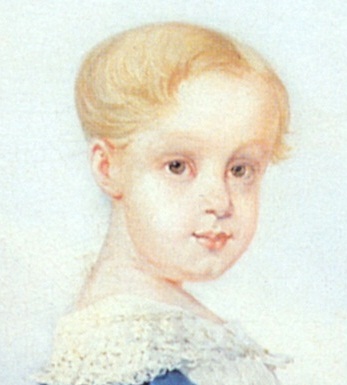 | February 23, 1845 - June 11, 1847 | Prince Imperial of Brazil from birth until his early death. |
| Isabel, Princess Imperial of Brazil | 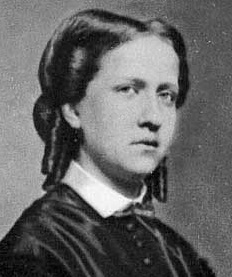 | July 29, 1846 - November 14, 1921 | Princess Imperial of Brazil and Countess of Eu through her marriage to Gaston d'Orléans. She had four children from this marriage. She also served as Regent of the Empire while her father was traveling abroad. |
| Princess Leopoldina of Brazil | 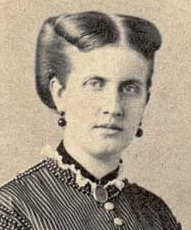 | July 13, 1847 - February 7, 1871 | Married Prince Ludwig August of Saxe-Coburg and Gotha and had four sons from this marriage. |
| Pedro Afonso, Prince Imperial of Brazil | 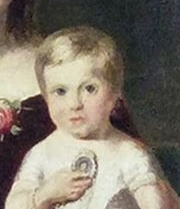 | July 19, 1848 - January 9, 1850 | Prince Imperial of Brazil from birth until his early death. |